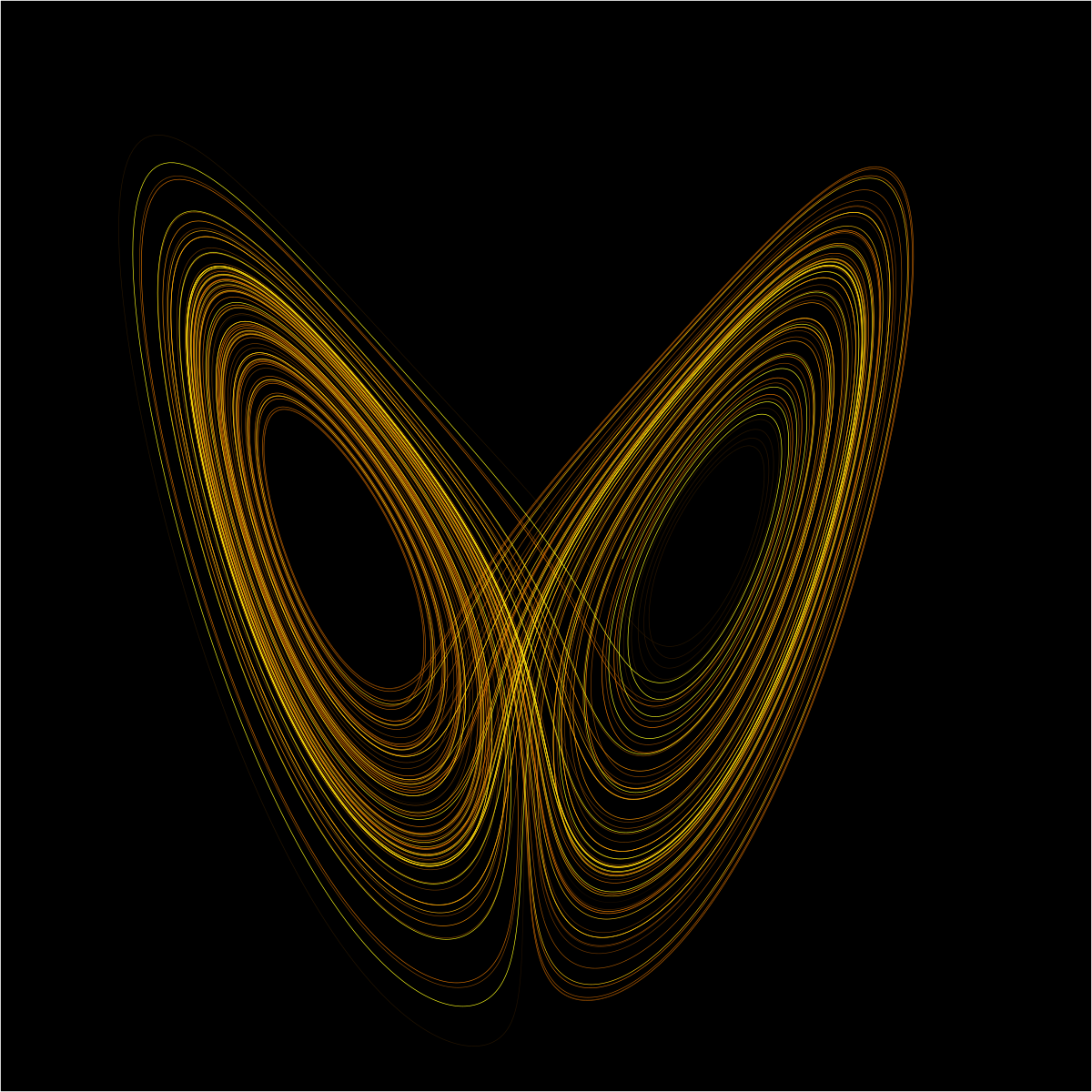On Chaos in Dynamical Systems

It is well-known that in Newtonian dynamics, motion is controlled by certain differential equations along with certain initial conditions. The problem is formulated in such a manner that it becomes deterministic i.e. given the initial condition the subsequent motion is predictable i.e. there is one-one connection between time and the system’s configuration. Also it is known that the concept of deterministic motion is absent in Quantum mechanics. Here the probability of an elusion’s position with some given velocity is known. If the position is known with greater probability, the corresponding velocity is then known with lesser probability.
The problem of chaotic motion arises in deterministic problems when a certain motion evolves as an irregular and unpredictable one. A detailed study of chaotic motion in solid mechanics, fluid mechanics, biomechanics have been made and standard books are available. [Ref: 2, 3, 4] Here we shall point out only some characteristics features of such motion.
Motion of a system or vibration of a system is classified as linear or non-linear according as the equations governing the motion are linear or non-linear. In the case of linear problems the theory of linear differential equations proves the uniqueness of solution for prescribed initial date. A small change in the initial value changes the solution by small quantities. Linear systems therefore are not included in chaotic motion.
Historically, it was the U.S. meteorologist E. N. Lorenz (1963) who first came across from computer solution of weather prediction. What happens in a chaotic motion of a simple pendulum subject to driving force is that it is an interplay between the tendency to oscillate at its natural frequency and the action of the forcing term. The transition between non-chaotic and chaotic state due to changes in the parameters occur in several ways and depend delicately upon the values of the parameters. A chaotic motion is unpredictable although it is deterministic in nature.
Only non-linear systems have a possibility of having a chaotic motion. Let us consider as an example the motion of a pendulum of mass m (weight w) which is linearly damped and is subject to periodic force. The equation of motion may be written as— (1),
where $$W_D$$ is the frequency of the driving force. In dimensionless form, (1) may be written as
$$frac{d^2theta}{dt^2}+frac{1}{q}frac{dtheta}{dt}+sintheta=bcos(W_Dt)$$ — (2)
Where $$q$$ is the damping parameter, $$b$$ the forcing amplitude, $$W_D$$ the drive frequency (time t here in regarded as dimensionless).
The equation (2) can be broken into three first order differential equations as follows:
$$frac{dtheta}{dt}=w$$
$$frac{dw}{dt}=-frac{1}{q}w-sintheta+bcosphi$$
$$frac{dphi}{dt}=w_D$$ — (3)
The dependent variables are $$theta,w,phi$$ and the non-linear terms are $$sintheta$$ and $$bcosphi.$$ The points where the roots of the equation (3) are zero are called attractors. They are also called characteristics points and they play an important role in the study of the motion. The system (3) has the characteristic points $$theta=0,theta=npi(n=pm 1,pm 2,dots).$$ Since the system has three variables, its trajectory resides in a phase space of three dimensions. The system contains three adjustable parameters namely the dividing force amplitude $$b$$, the damping factor $$q$$ and the angular drive frequency $$W_D.$$
In order to understand the nature of different trajectories for different values of the parameters, it is best to use a digital computer. For example, $$q=2,W_D=frac{2}{3}$$ and $$0.5leq bleq 1.5$$ (Gwinn and Weslervelt) was used to obtain interesting results. The fundamental characteristic of a chaotic motion of a physical system is its sensitivity to initial state i.e. a small change in the initial values of the phase variables bad to large change quickly.
In a chaotic motion of pendulum the values of $$theta,w,phi$$ changes abruptly from one value to other although the motion remains finite throughout, and it does not repeat the same path again. The inquisitive reader may look into the picture of such motion in the books given in reference.
Reference:
1. E. N. Lorenz (1963): Deterministic nonperiodic flow. J. Atmos Sc. 20, 130-41.
2. J. Light Hill: Biomechanics: CSIR New Delhi, 1991.
3. G. L. Baker and J. P. Gollub: Chaotic Dynamics. Cambridge University Press. 1990.
4. M. Schroeder: Fractals, Chaos Power laws. W. H. Freeman and Company. 1991.
5. E. G. Gwinn and RM Westervelt (1985): Intermittent chaos and low frequency noise in the driven damped pendulum. Rays. Rev. Lett. 54, 1613-16.
Author: Dr. S. K. Chakraborty. Dr. Chakraborty is a retired professor of Mathematics, University of Burbwan, West Bengal.
[This article was first published in Ganit Bikash, Volume 29, June-December, 2001.]
